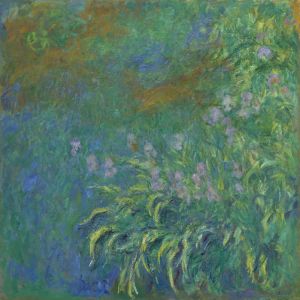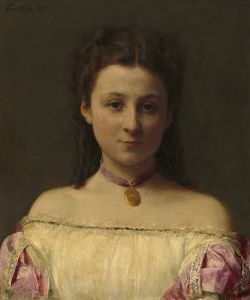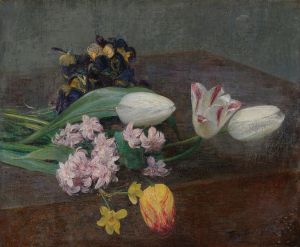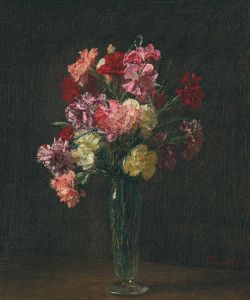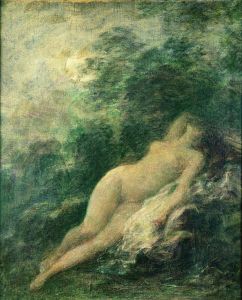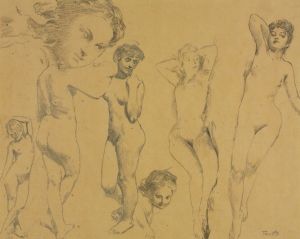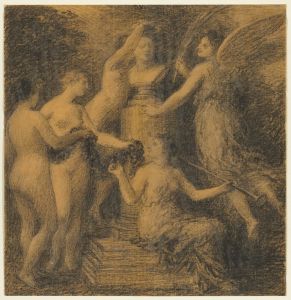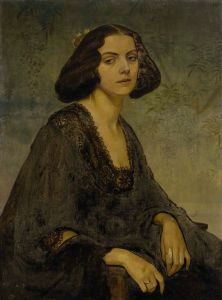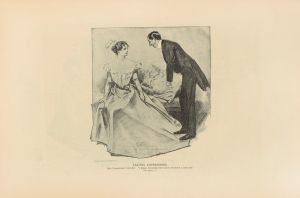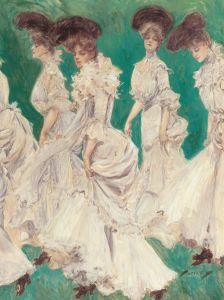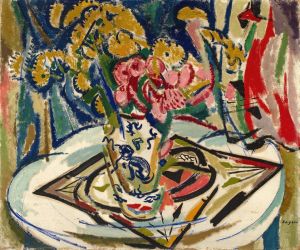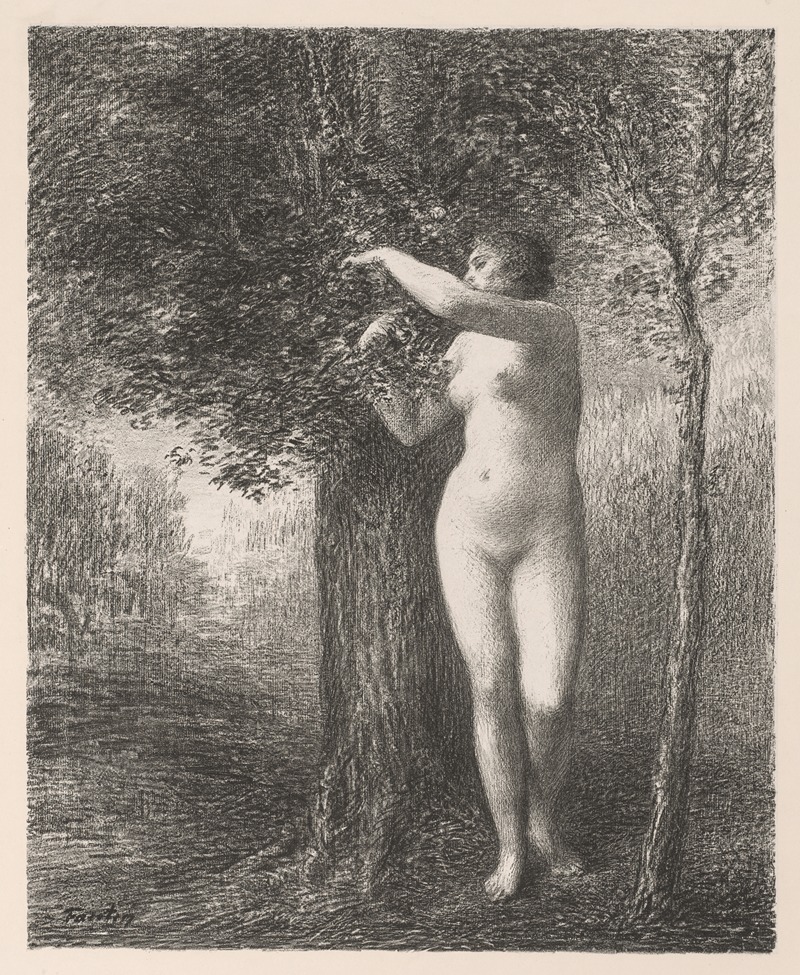
Eve
A hand-painted replica of Henri Fantin-Latour’s masterpiece Eve, meticulously crafted by professional artists to capture the true essence of the original. Each piece is created with museum-quality canvas and rare mineral pigments, carefully painted by experienced artists with delicate brushstrokes and rich, layered colors to perfectly recreate the texture of the original artwork. Unlike machine-printed reproductions, this hand-painted version brings the painting to life, infused with the artist’s emotions and skill in every stroke. Whether for personal collection or home decoration, it instantly elevates the artistic atmosphere of any space.
Henri Fantin-Latour was a renowned French painter known for his exquisite still lifes and portraits. However, his work also extended into mythological and allegorical themes, as exemplified by his painting "Eve." Although not as widely recognized as some of his other works, "Eve" is a significant piece that reflects Fantin-Latour's interest in exploring themes beyond the conventional boundaries of his time.
"Eve" by Henri Fantin-Latour is a painting that delves into the biblical narrative of the first woman, Eve, from the Book of Genesis. The painting captures Eve in a contemplative pose, often depicted in a natural setting that emphasizes her connection to nature and the origins of humanity. Fantin-Latour's interpretation of Eve is notable for its subtlety and depth, focusing on the emotional and psychological aspects of the character rather than merely the physical or narrative elements.
Fantin-Latour's approach to painting was heavily influenced by the Romantic movement, which is evident in his treatment of mythological subjects. His use of light and shadow, as well as his attention to detail, create a sense of intimacy and immediacy in the painting. The artist's skillful use of color and composition draws the viewer into the scene, inviting them to reflect on the themes of innocence, temptation, and the human condition.
The painting "Eve" is a testament to Fantin-Latour's ability to convey complex emotions and ideas through his art. His portrayal of Eve is both timeless and universal, resonating with audiences across different cultures and eras. The work reflects Fantin-Latour's mastery of technique and his deep understanding of the human psyche, making it a valuable contribution to the canon of Western art.
Fantin-Latour's "Eve" is part of a broader tradition of artists exploring biblical and mythological themes. His contemporaries, such as Gustave Moreau and Pierre Puvis de Chavannes, also engaged with similar subjects, each bringing their unique perspectives and styles to the interpretation of these timeless stories. Fantin-Latour's work stands out for its introspective quality and its focus on the inner life of its subjects.
While "Eve" may not be as widely exhibited or studied as some of Fantin-Latour's other works, it remains an important piece within his oeuvre. It exemplifies his versatility as an artist and his ability to transcend the boundaries of genre and subject matter. The painting continues to be appreciated by art historians and enthusiasts for its beauty and its insightful exploration of one of humanity's most enduring myths.
In summary, "Eve" by Henri Fantin-Latour is a painting that captures the essence of the biblical figure with sensitivity and depth. Through his masterful technique and thoughtful interpretation, Fantin-Latour offers a fresh perspective on a familiar story, inviting viewers to engage with the painting on both an emotional and intellectual level.





